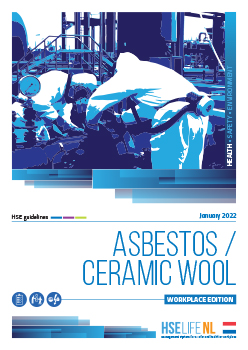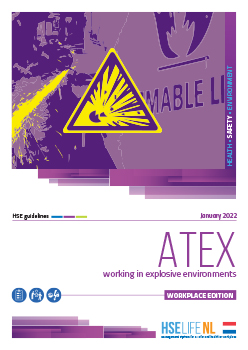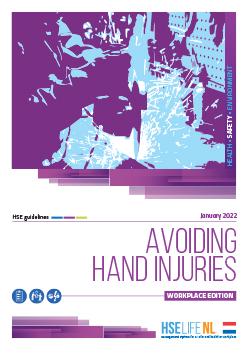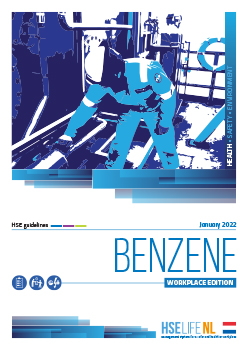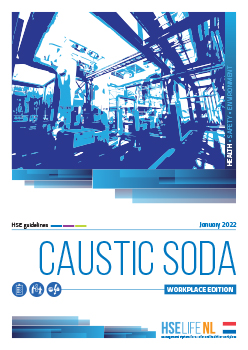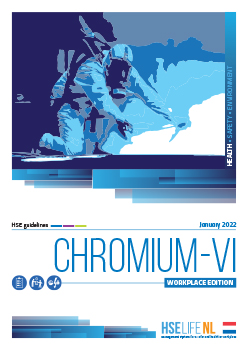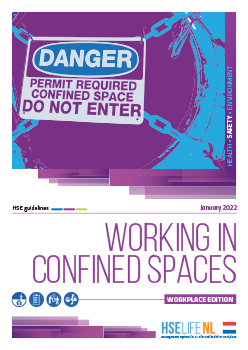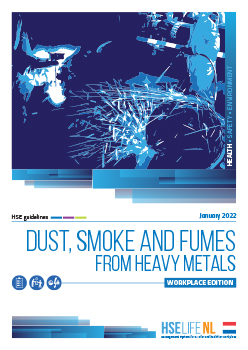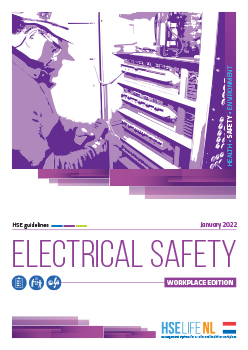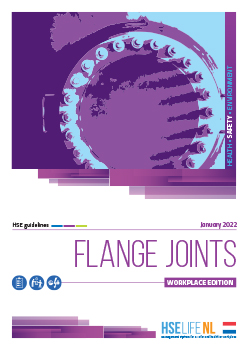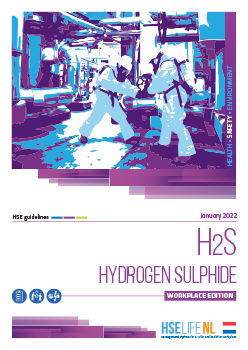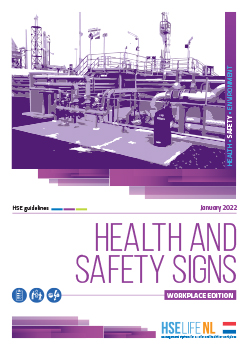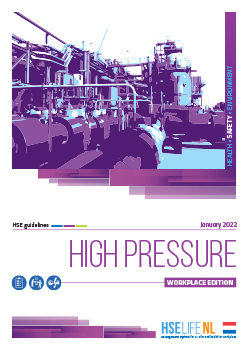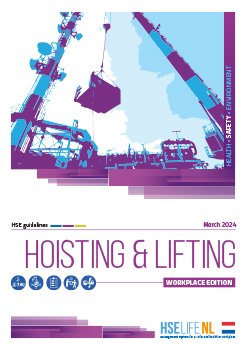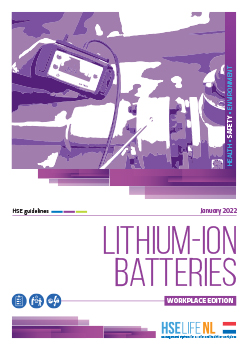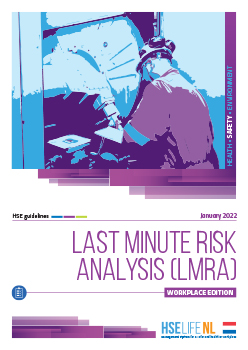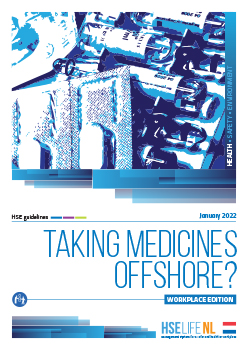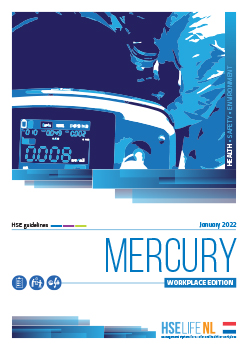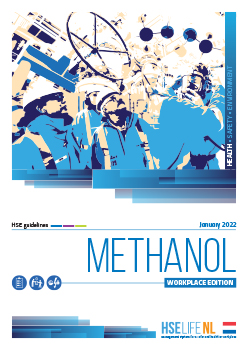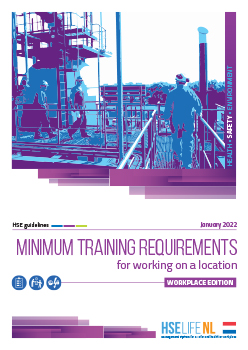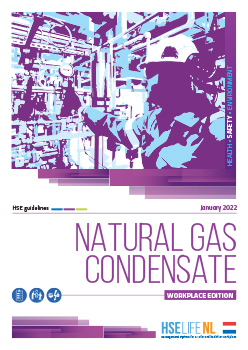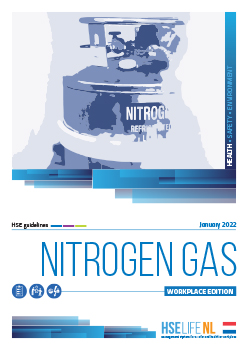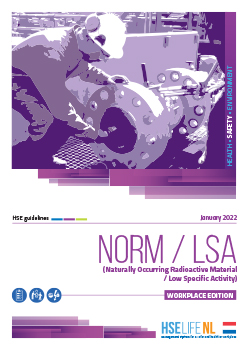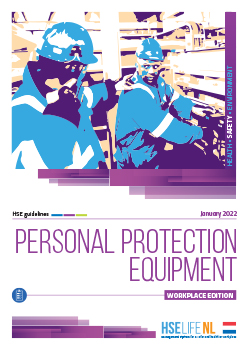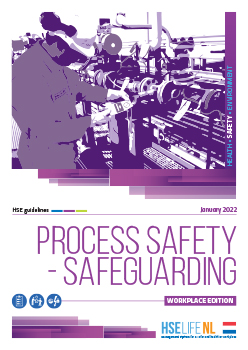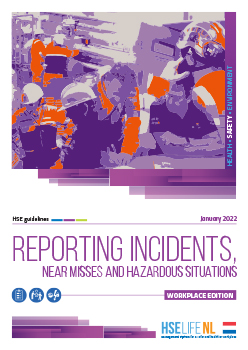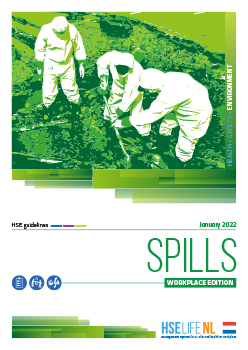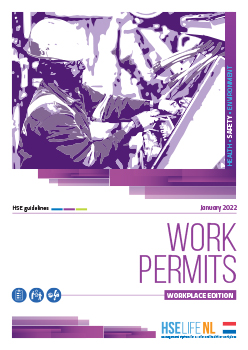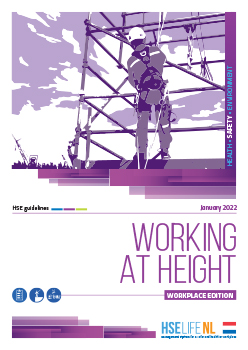Health, safety and environment items
For your daily use
The HSElife NL working groups are the driving force behind the composition of uniform and standardized HSE information. They make this information available for each topic through HSE documentation and video presentations.
A6 brochure
In an A6 brochure you can read concise harmonized information about an item. It’s a tool to help you to familiarize yourself with the subject or to reread the information.
Presentation
Use the presentation for work preparations, for example during the toolbox meeting. At the end of the presentation you’ll find a questionnaire to interact with each other.
Action Focus Tool
The Action Focus Tool increases awareness and makes it possible to discover dangers!
PLEASE NOTE: In order to use HSElife NL material, we refer to the disclaimer.
Choose your item here:
Asbestos
Because of its excellent properties as a material, asbestos was widely used in buildings until the late twentieth century. In 1993, however, its use was prohibited in the Netherlands. Since then, no products containing asbestos have been manufactured. But the material can still be found in older buildings and systems. If it is damaged, exposed during renovation or demolition work or affected by fire, asbestos presents a serious danger to human health and the environment.
ATEX
ATEX is the abbreviation for the French words ATmosphères EXplosibles. ATEX are European directives for explosive environments and situations where there is a risk of gas and dust explosion. The purpose of the ATEX directives is to ensure the safety and health of the workforce in areas with explosion hazards. This involves the control of conditions in an explosive atmosphere, in situations where it is not possible to eliminate the explosion hazard by substitution of substances. Strict requirements are therefore imposed on the workplace, on work equipment and on installation material.
Avoiding hand injuries
Injuries to the limbs account for some 85% of all major injuries, especially to various parts of the hand or wrist. Most accidents occurs during handling. The injuries associated with it are mainly fractured, crushed or severed fingers. There are several hazards that can cause a hand injury.
Benzene
Benzene is carcinogenic. It's one of the components of natural gas condensate. So avoid any contact with benzene. What precautions can you take? What should you do if you do get exposed to benzene?
Caustic soda
Caustic Soda or sodium hydroxide is a highly aggressive and corrosive substance that absorbs moisture from the environment. When dissolved in water, it is known as Caustic Soda. We use Caustic Soda to desulfurise acidic natural gas condensate, and to clean and degrease equipment. Inhalation of vapours or spray mist may produce severe irritation of the respiratory tract. Anyone coming into contact with Caustic Soda may suffer serious burns.
Chromium-VI
Chromium-VI is particularly dangerous when it appears in the form of dust particles suspended in the air. These particles can come into contact, or enter, your body through your lungs, through sweat on your skin, or through your mouth. This can be harmful to your health. For example, it can lead to work-related asthma, eye, skin and respiratory tract irritation, liver and kidney damage, lung diseases, and respiratory tract cancer. Please note: the symptoms mentioned are general and may vary according to exposure in specific work situations and per person. When in doubt, always consult a Health and Safety expert or an occupational physician.
Confined spaces
Before certain jobs on an installation can begin, the installation (or relevant parts of the installation) must first be safeguarded. This means that it must be cleared of any liquid, gas, pressure and power. In addition to measuring oxygen levels, toxicity, and Lower Explosion Limit (LEL) as as baseline measurements, confined spaces are particularly susceptible to extraordinary circumstances that may be or become hazardous or life-threatening.
Dust, smoke and fumes from heavy metals
The term ‘heavy metals’ is a collective term for thirteen different metals. These are natural elements that can be found in the air, soil and water. Metals are also used in various products, from jewellery to paint. In this ocument we look, in particular, at ChromiumVI, Lead and Cadmium. These metals occur in an industrial working environment where they can cause health problems. Always look at the specific risks of the heavy metals that will be used.
Electrical safety
Accidents with electricity can have catastrophic consequences. In order to prevent accidents of this kind from occurring, you must be familiar with the tasks and responsibilities of everyone who is involved with work on electrical installations. You should also be aware of the risks and be able to recognise dangerous situations where electricity is involved.
Flange joints
Preventing leaks of gas and oil products is very important because of possible implications for the safety on the location and the environment. One of the main potential sources for leaks are the flange joints in the installations. We have therefore issued strict instructions to make absolutely sure that the joints are leakproof. Qualified fitters and their supervisors are expected to know the instructions and comply with them.
H2S
H2S (Hydrogen Sulphide) may occur in drilling at a drilling rig, at production and processing facilities, during the extraction of oil and natural gas. It is extremely toxic and very harmful to the environment.
Health & Safety signs
Clear health and safety signs play an essential part in safety during operations and in the health of employees. That’s why at a location everyone (visitor, employee and contractor) must be familiar with the meaning of the H&S signs and follow the rules.
High pressure
Gas is extracted from the ground in a highly pressurized state. When an installation is in full operation, all pipes and storage facilities are under high pressure. Pressures of up to 200 bar are not exceptional.
Hoisting and lifting
There is an increased risk of personal injury or damage associated with all hoisting and lifting activities. Safe hoisting and lifting is more than just knowing the proper techniques and using the right materials and tools. You need to be trained, to gain experience. It is only then that you can make a reasoned judgement of the risks involved in the work at hand and carry it out safely.
Lithium-ion batteries
A Lithium-ion battery is a way to store energy and convert chemical energy into electrical energy. Lithium-ion batteries contain much more energy than a standard battery. This has many advantages, but also disadvantages. If used incorrectly, a Lithium-ion battery can unexpectedly ignite or even explode.
LMRA
You need to perform a LMRA in order to make sure that the risk you have estimated beforehand as well as the measures you have taken are consistent with the situation you encounter at the work place.
Medicines
If you're on medication and you need to carry your medicines with your offshore, you have to report this before departure. For medicines could possibly influence your judgment or response capacity. Everybody who knows the risk of working in a processing environment, also knows that a quick and adequate response can be vital. Therefore, this rule has a clear and important reason: the safety of all on board.
Mercury
Mercury occurs naturally in gas-containing formations. Mercury is produced to a greater or less degree during the production of natural gas. It may occur as metallic mercury in all production facilities, specifically in pipes, filters, tanks and glycol units. Mercury may also occur in the sludge from, for example, skimmer tanks. Mercury is harmful to health and the environment. This means: maximum caution and care is called for!
Note: This video is about generally applicable rules. Individual companies may have different, stricter rules. Just ask!
Methanol
In Natural Gas extraction, Methanol can be injected into the process to prevent the formation of hydrate (ice-like blockage in the process) in transport pipes. Methanol is a substance that easily evaporates. Both the liquid and the vapor are highly flammable. The legal limit value for exposure of persons to Methanol is important: an average value of 100 ppm = 133 mg/m3 during 8 hours.
Minimal training requirements
Working in the Oil and Gas industry is fraught with risks. Systems are often under high pressure, substances are flammable, explosive or harmful to health. These are just a few examples. Is working in this industry dangerous then? No, because with proper training you recognize the risks and you know how to act.
Natural Gas Condensate
Natural Gas Condensate is a by-product of gas extraction and gas production and contains benzene, among other things. It is a mixture of hydrocarbons that occurs at every production installation. It is comparable to petrol and it derived from sour gas locations, has a different structure than that of fresh gas sites. In both cases it is flammable and explosive. It's also harmful to health and to the environment. This means that maximum care and alertness are required at all times!
Nitrogen gas
Nitrogen gas is naturally present in the air, of which it makes up approximately 78%. In exploration and production operations, highly compressed nitrogen gas is used for maintenance and inspection purposes. When it's released, it displaces the oxygen in the atmosphere. In concentrations higher than natural levels, nitrogen gas poses a major health risk. It can even lead to death. This means that extreme caution is necessary when nitrogen gas is being used.
NORM/LSA
Natural Occurring Radioactive Material can be present in the installation of E&P locations. Everyone visiting any such location,will be informed about this immediately after arrival. Anyone who will beworking at such a location, will be informed beforehand about the risksassociated with the material and how to deal with it.
PPE
Strict procedures apply when working on installations and systems. For there is always a risk noxious substances might be released. Therefore you should carefully read your Permit to Work and check whether the described control measures have been taken. Then take the precautionary measures which belong to the work that is going to be done by you.
Process safety
Before certain jobs on an installation can begin, the installation (or relevant parts) must first be safeguarded. That means ensuring that the installation is free of liquid and gas and depressurized. Safeguarding is the responsibility of the operator. With this the Operations department provides a safe workplace. So liquids and gases are confined to where they belong: in pipes and installations on which no work is scheduled.
Reporting incidents
Report immediately It is important to prevent the recurrence of incidents, for your own health and that of your colleagues. But also to protect the installation and the environment. Therefore, immediately report an incident, a near miss or hazardous situation to your manager and site manager or supervisor (OIM).
Spills
When there is an unintentional loss of containment, hydrocarbons such as natural gas and natural gas condensate could end up in the environment, this could have an impact on the environment as these are harmful substances. This also applies to the various chemical substances that are used during production or maintenance activities. It is important that these substances are not released into the sea and/or the air
Work permits
There are strict procedures when working on installations and systems. After all, there's a risk for noxious substances to be released. Therefore read the Permit to Work carefully and check if the described control measures have been taken. Then take the precautionary measures which belong to your job.
Note: This video is about generally applicable rules. Individual companies may have different, stricter rules. Just ask!
NOTE: This refresher course does not replace the Basic Training Permit to Work. Ask for company specific mandatory training!
Working at height
On any installation, activities to be executed at height are the most hazardous. That is why you need explicit authorization to execute these kinds of activities. The use of protective equipment in order to prevent you from falling or to protect you from any consequences of falling, is mandatory. Before as well as during the work, it is expected from you that you know when and how to use this equipment.
Note: This video is about generally applicable rules. Individual companies may have different, stricter rules. Just ask!



